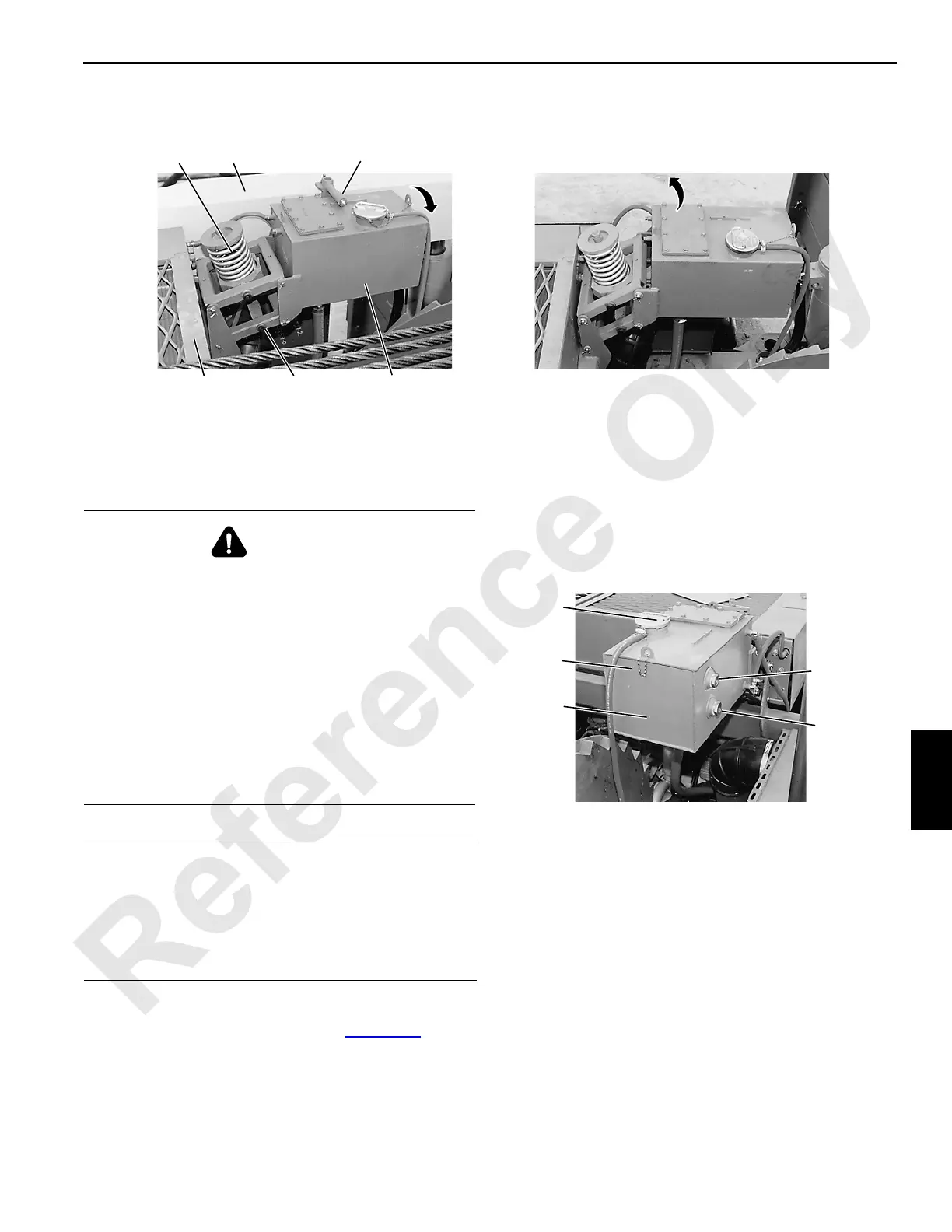Manitowoc Published 11-06-15, Control # 040-13 7-13
2250 SERVICE/MAINTENANCE MANUAL POWER TRAIN
Maintenance
Daily Maintenance (Start of Each Shift)
1. Check coolant level when cold (see Figure 7-13):
a. Raise gantry to raise auxiliary tank.
b. Coolant should be at middle of full level cold gauge
or at bottom of fill neck if not equipped with gauge.
c. Fill cooling system as required with coolant.
See engine manufacturer’s manual for antifreeze
and coolant additive recommendations.
2. Look for coolant leaks while engine is running and
correct if found.
Semiannual Checks
1. Inspect fill cap and thermostat for proper operation and
replace worn parts:
• Fill cap relieves at 7 psi (0,5 bar).
• Thermostat closes at 175°F (79°C) and opens fully
at 197°F (92°C).
2. Inspect water pump belts for wear and proper
adjustment (see engine manufacturer’s manual).
3. Inspect cooling system hoses for deterioration and other
defects. Replace as necessary.
4. Tighten hose clamps.
FIGURE 7-12
P780
Storage Position
P781
Operating Position
Spring Gantry
Arm on gantry pushes auxiliary tank
down when gantry is lowered.
Radiator Linkage Auxiliary
Tank
Spring force raises auxiliary tank
when gantry is raised.
WARNING
Burn Hazard!
Avoid personal injury from heated coolant spray or steam
— do not remove radiator cap from hot engine. Stop
engine and wait until coolant temperature is below 120°F
(50°C). Then:
• Place a protective covering over fill cap,
• Slowly turn fill cap counterclockwise until it stops at
safety detent,
• Wait until pressure (indicated by hissing sound) is
completely relieved,
• Depress fill cap and turn counterclockwise to remove.
CAUTION
Overheating Hazard!
Avoid engine damage from overheating — raise auxiliary
tank before checking level or adding coolant. Cooling
system will not fill properly if tank is down.
Do not allow coolant level to go below low level gauge.
FIGURE 7-13
P783
Fill
Cap
Overflow
Line
Auxiliary
Tank
Right Rear Corner of Radiator
FULL Level
Cold Gauge
LOW Level
Gauge

